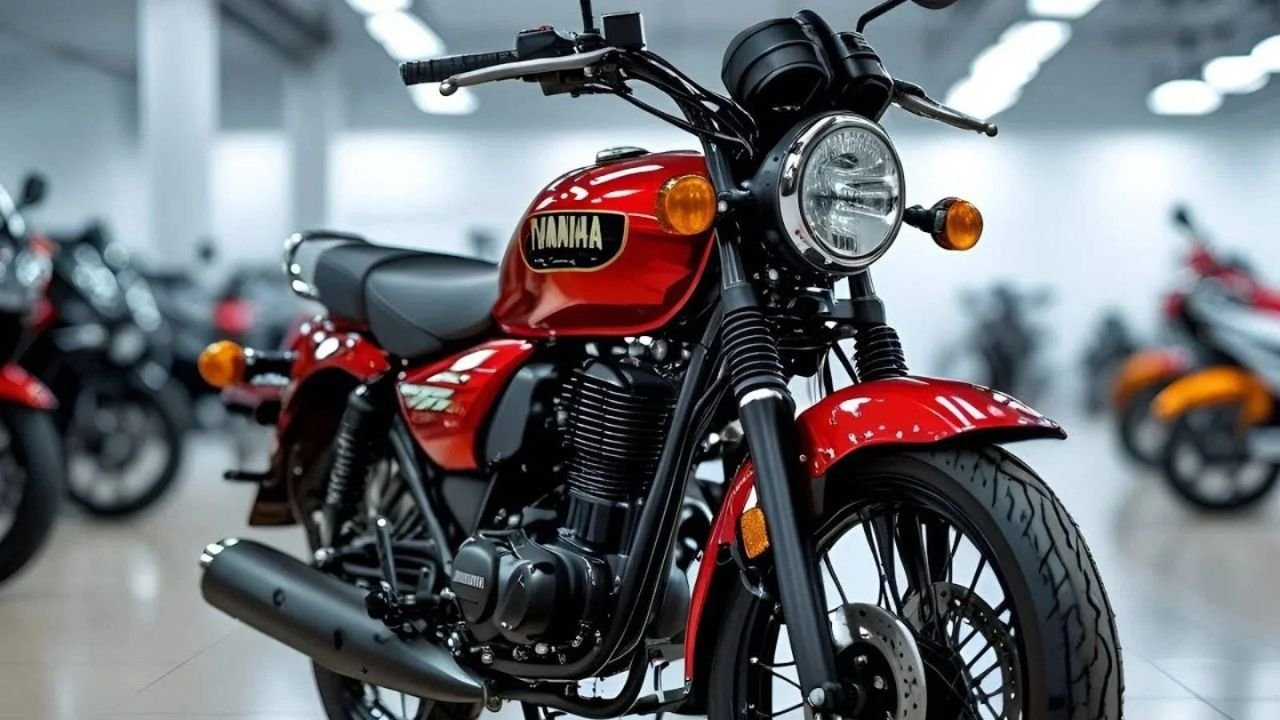The Yamaha RX100 is not just a motorcycle; it is an emotion, a cultural icon, and a symbol of pure motorcycling joy in India. Ask any rider from the 80s or 90s about their first love on two wheels, and chances are they will proudly say – the Yamaha RX100. With its raw power, lightweight body, and unmistakable exhaust note, the RX100 changed the way Indians looked at motorcycles. Today, even decades after its discontinuation, the Yamaha RX100 continues to hold a special place in the hearts of bikers, collectors, and enthusiasts.
In this detailed article, let’s revisit what made the Yamaha RX100 a timeless classic, explore its features, legacy, riding experience, and why even today it commands cult-like respect across India.
The Arrival of the Yamaha RX100 – A Revolution on Indian Roads
When the Yamaha RX100 was launched in India in 1985, it instantly grabbed attention. At a time when most motorcycles were slow, bulky, and focused purely on mileage, the RX100 offered something completely different – performance with attitude. With its 98cc two-stroke engine delivering around 11 horsepower and a top speed close to 100 km/h, it was a machine that could thrill riders like no other bike in its segment.
For young riders of the time, owning a Yamaha RX100 was like holding a badge of honour. It was fast, stylish, and had a personality that made it stand apart from other commuter motorcycles. Unlike fuel-efficient machines designed only for practicality, the RX100 was built to ignite passion and adrenaline.
Yamaha RX100 Key Highlights
| Feature | Details |
|---|---|
| Engine | 98cc, 2-stroke, air-cooled |
| Power | ~11 HP |
| Gearbox | 4-speed manual |
| Weight | ~100 kg |
| Top Speed | ~100 km/h |
| Mileage | 25–30 km/l (real-world) |
| Suspension | Telescopic forks (front), swingarm (rear) |
| Brakes | Drum (front and rear) |
| Years of Production | 1985–1996 |
| Legacy | Cult status for speed, sound, and style |
What Made the Yamaha RX100 So Special?
The charm of the Yamaha RX100 lay not only in its speed but also in the way it delivered that performance. The moment you twisted the throttle, the bike came alive with an instant surge of power. Its crisp acceleration, responsive engine, and iconic exhaust note made it feel like a race machine disguised as a commuter.
The famous “ting-ting-ting” sound of the two-stroke engine was unlike anything else on Indian roads. For many, just hearing that sound was enough to recognise a Yamaha RX100 even before it appeared in sight. This unique auditory signature made it a legend.
Beyond its performance, the Yamaha RX100 sported a design that was clean, classic, and timeless. The round headlamp, chrome fenders, slim fuel tank, and minimalistic styling gave it a rugged yet stylish appeal that still turns heads today.
Also Read – New Platina 125 – Budget-Friendly Commuter Bike with Unmatched Mileage and Comfort
Performance That Redefined Its Class
In the mid-80s, Indian motorcycles were built primarily for efficiency. The Yamaha RX100 broke that mould. With its lightweight frame and power-packed engine, it offered unmatched acceleration. Riders could go from 0 to 60 km/h in under 7 seconds – a figure unheard of for a 100cc motorcycle at the time.
The slick 4-speed gearbox added to the riding thrill, allowing smooth and quick gear shifts. College students, racers, and young professionals flocked to the Yamaha RX100 because it felt sporty, aggressive, and energetic – qualities rarely found in Indian bikes of that era.
Handling and Ride Quality – Light, Nimble, and Engaging
One of the biggest reasons behind the RX100’s success was its excellent handling. Weighing just about 100 kg, the bike felt agile and easy to control. Whether it was weaving through traffic or cruising on open highways, the Yamaha RX100 provided riders with a level of confidence that was unmatched.
The telescopic front forks and twin rear shock absorbers were basic but tuned well for Indian conditions. The bike absorbed potholes decently and remained stable at higher speeds. Riders loved the upright seating posture, which struck the right balance between comfort and control.
Even today, enthusiasts restoring the RX100 praise its nimble handling and the way it responds to every flick of the throttle.
The Cult of the Yamaha RX100 – A True Legend
Although production stopped in 1996 due to stricter emission norms, the Yamaha RX100 has never truly left Indian roads. Thousands of restored and well-maintained units still roam the streets, often drawing more attention than modern superbikes.
The bike became a symbol of rebellion, youth, and freedom. For many, their first date with speed and adventure began on the Yamaha RX100. Its simplicity, reliability, and thrill factor created a lifelong fan following.
Modding Culture and Racing Roots
Another reason the Yamaha RX100 became iconic was its mod-friendly nature. Mechanics and riders could easily tune the two-stroke engine for more performance. From adding expansion chambers to altering carburetors and exhausts, modified RX100s often dominated local drag races and street competitions.
Many tuned versions could easily touch 120–130 km/h, shocking bigger bikes of the time. This flexibility made the RX100 a darling of the racing community, and even today, it is widely used in custom builds and drag events.
Can You Still Own a Yamaha RX100 Today?
Yes – but it’s not as easy as walking into a showroom. Since production stopped nearly three decades ago, finding a well-kept Yamaha RX100 requires patience, money, and luck. Restored models in good condition can cost anywhere between ₹70,000 and ₹1.5 lakh. Rare colour variants or bikes with all-original parts can go even higher.
Spare parts availability is another challenge. While some parts are still manufactured by aftermarket vendors, others must be sourced from old stock or imported. Yet, for die-hard enthusiasts, the effort of owning and maintaining an RX100 is worth every rupee.
Why the Yamaha RX100 Still Lives On
Despite modern motorcycles boasting advanced features like digital consoles, ABS, and fuel injection, the Yamaha RX100 remains in demand. Its popularity is not based on technology but on the pure emotional connection it creates with its riders.
It represents an era when biking was about passion, raw energy, and freedom. Every ride on the RX100 feels like a reminder of the golden days of Indian motorcycling. That’s why collectors, young enthusiasts, and even seasoned riders continue to search for this legend.
FAQs About the Yamaha RX100
Q1: Why was the Yamaha RX100 discontinued?
It was discontinued in 1996 because its two-stroke engine could not meet stricter emission norms introduced in India.
Q2: What is the real mileage of the RX100?
It usually delivers between 25–30 km/l in real-world conditions, though modified bikes may return lower efficiency.
Q3: Is the Yamaha RX100 still road legal?
Yes, as long as it is properly registered, insured, and passes pollution checks.
Q4: Is the RX100 a good investment today?
Absolutely. With rising demand and decreasing supply, it has become a collector’s item with strong resale value.
Q5: Will Yamaha relaunch the RX100?
There are rumours, but a true two-stroke RX100 is unlikely due to modern emission rules. A four-stroke revival may happen but won’t carry the same soul.
Conclusion – The Yamaha RX100 is More Than Just a Motorcycle
The Yamaha RX100 wasn’t built to be the most fuel-efficient or the most practical motorcycle. It was built to create memories, inspire passion, and deliver thrills that stay with you for a lifetime. Even after 40 years, it continues to be spoken of with respect and affection.
If you have ever owned a Yamaha RX100, you know the bond is unbreakable. And if you haven’t, riding one even once will show you why it remains the most celebrated motorcycle in India’s biking history.
The RX100 is not just a machine – it is a legend that refuses to fade.
Some Important Link
| Download News APP | Click Here |
| WhatsApp Group | Click Here |
| Home Page | Click Here |





